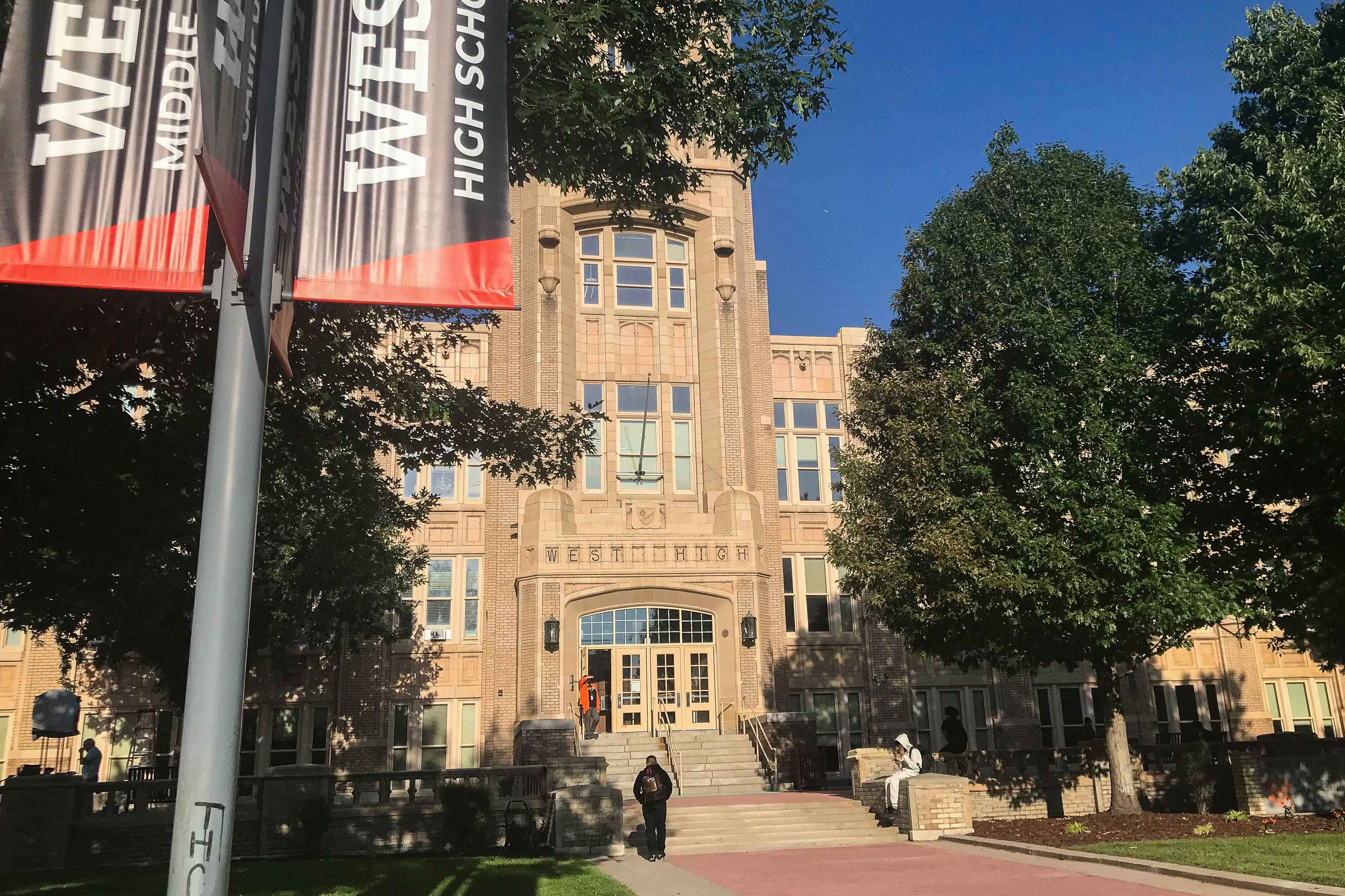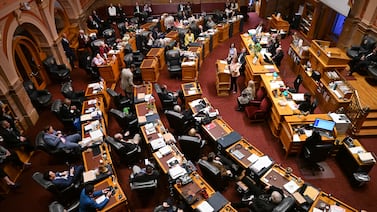Sign up for Chalkbeat Colorado’s free daily newsletter to get the latest reporting from us, plus curated news from other Colorado outlets, delivered to your inbox.
Denver Public Schools’ superintendent would have to “analyze and adjust” school enrollment boundaries every 10 years or less under a proposal being considered by the school board.
Board member Scott Esserman, who introduced the proposal Thursday, said it was a long time coming. The district hasn’t systematically reviewed its school boundaries in several decades, since it was the subject of a school desegregation lawsuit that led to widespread busing.
The proposal, known as Executive Limitation 19, would require the superintendent to analyze and adjust school boundaries in conjunction with the federal Census.
It would direct the superintendent to solicit feedback from the community, create “safe and accessible” walking routes to school, and minimize the walking distance within each boundary to reduce the need for district-provided transportation.
The board has not yet set a date to vote on the proposal.
In 1969, eight Denver families sued the district over the rescinding of several resolutions to integrate Denver’s schools, including through boundary changes. The court case, known as Keyes v. School District No. 1, went all the way to the U.S. Supreme Court and resulted in Denver Public Schools adopting a complex, cross-city system of busing to integrate its schools.
After busing ended in 1995, many Denver schools once again became segregated by race and family income. In the case of the East and Manual high school boundaries, former school board members have said their decision in 1995 exacerbated the divide.
The proposed Executive Limitation 19 would require the superintendent to avoid creating enrollment boundaries or enrollment zones — which are big boundaries containing several schools — that “socioeconomically segregate schools.”
But the power to prevent such segregation through boundary changes is complicated because about 42% of DPS students choose to attend a school that is not their “boundary school,” according to district data.
School choice, or the ability for students to apply to attend any public school, is enshrined in Colorado law. DPS’ one-stop application makes it easy — and in the case of students who live in enrollment zones, all but mandatory — for families to use school choice.
Board members on Thursday acknowledged that they’d have to grapple with school choice.
“I’m almost afraid to think of the complexity of how school choice layers into this conversation,” board member John Youngquist said.
Some parents and students have suggested that changing school boundaries could help address another problem: declining enrollment at some schools.
Students at West High School asked the district last year to reevaluate West’s boundary. Denver funds its schools per student, and West students said declining enrollment at their school meant it didn’t offer as many business, language, or art classes as larger high schools.
Low enrollment also puts schools at risk for closure. The school board voted in 2023 to close three small schools that year and again in November to close or partially close another 10 schools with low enrollment at the end of this school year.
But the pervasiveness of school choice could mean school boundary changes wouldn’t truly fix that problem, board members said.
District data shows that at some of the elementary schools set for closure this spring, a significant number of the students who live in the boundary chose other schools this year. At Columbian Elementary School, more than 80% of students who live in the boundary chose to attend a school other than Columbian, district data shows.
“I don’t think we can fix any of our enrollment issues by shifting enrollment boundaries,” Esserman said. However, he added that he believes shifting boundaries would allow the district to “improve the way that we’re serving students.”
The proposal is similar to one floated by a former board member in 2023. However, that proposal would have required the superintendent to analyze and adjust school boundaries every four years. It also would have capped elementary school enrollment at 600 students. The board voted in 2023 to postpone a discussion on that proposal and never returned to it.
Melanie Asmar is the bureau chief for Chalkbeat Colorado. Contact Melanie at masmar@chalkbeat.org.







